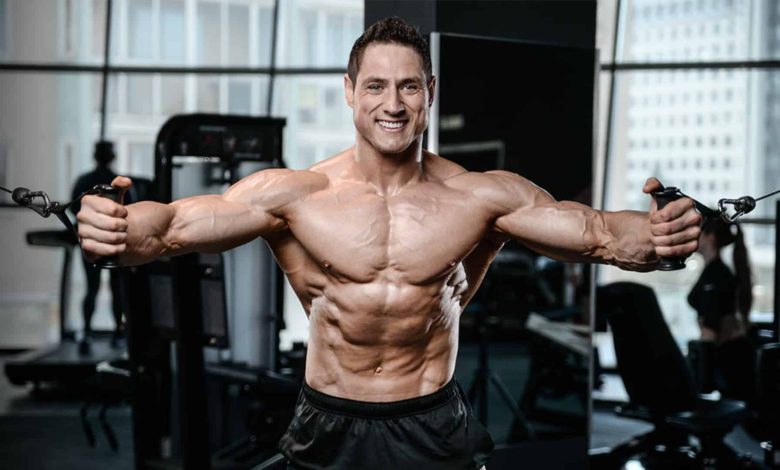Ultimate Guide to Sculpting a Strong and Defined Chest

Whether you are looking to boost your upper body strength or simply sculpt a well-defined chest, incorporating effective Chest workouts into your fitness routine is essential. Chest exercises target key muscles that help improve posture, athletic performance, and overall muscle symmetry. This guide will walk you through the most effective chest exercises and provide valuable tips to help you reach your fitness goals.
Anatomy of the Chest Muscles
The chest consists primarily of two major muscle groups:
- Pectoralis Major: This is the larger, more visible muscle of the chest. It is split into:
- Clavicular Head (Upper Chest): Located closer to the collarbone.
- Sternal Head (Lower Chest): Located near the sternum.
- Pectoralis Minor: A smaller muscle underneath the pectoralis major, which stabilizes the shoulder blades and contributes to overall chest function.
By understanding these muscles, you can better target each area for a balanced and fully developed chest.
Why Chest Workouts Are Important
Engaging in regular chest workouts offers numerous benefits:
- Increased Strength: Building chest muscles enhances overall upper body strength, which is essential for pushing movements such as pressing and lifting.
- Improved Aesthetics: A well-developed chest creates a more proportionate and sculpted upper body, contributing to a balanced physique.
- Better Posture: Strong chest muscles help correct imbalances in the upper back and shoulders, promoting better posture.
- Enhanced Performance: Chest workouts also improve athletic performance in sports such as swimming, rowing, and even martial arts.
Key Chest Exercises to Include in Your Routine
To build a strong chest, focus on a mix of compound and isolation exercises that target different angles of the muscle. Below are some of the best chest exercises:
Barbell Bench Press
The barbell bench press is a time-tested chest exercise that works the chest, shoulders, and triceps. It primarily targets the lower chest.
- How to do it: Lie on a flat bench with your feet on the ground. Grip the barbell slightly wider than shoulder-width, lower it to your chest, and then press it back up to full arm extension.
Dumbbell Chest Press
Dumbbell presses offer a wider range of motion than the barbell version, activating the chest more fully and improving muscle balance.
- How to do it: Lie on a bench with a dumbbell in each hand. Lower the dumbbells to chest level, then press them back up, making sure your elbows maintain a 45-degree angle.
Incline Bench Press
Incline presses place more emphasis on the upper chest, helping to develop that area for a well-rounded chest.
- How to do it: Set the bench to a 30-45 degree angle. Lower the barbell to your upper chest, then press it back up while focusing on contracting the upper part of your chest.
Decline Bench Press
The decline bench press targets the lower portion of the chest and offers a unique angle to build this area effectively.
- How to do it: Lie on a decline bench with a barbell or dumbbells. Lower the weights toward your chest and then press them back up, similar to a traditional bench press.
Push-ups
Push-ups are a classic bodyweight exercise that engages the chest, shoulders, and triceps. They can be modified for any fitness level.
- How to do it: Position your hands slightly wider than shoulder-width apart and lower your body to the ground until your chest nearly touches the floor. Push back up, keeping your body aligned.
Chest Flyes
Chest flyes are an isolation exercise that stretches and contracts the chest muscles, helping to build muscle definition and size.
- How to do it: Lie on a bench with dumbbells in hand. With a slight bend in your elbows, lower the dumbbells out to the sides, then bring them back together at chest level, focusing on squeezing the chest.
Cable Chest Flyes
Cable flyes provide continuous tension on the chest throughout the movement, offering a more intense challenge for the muscles.
- How to do it: Set the cables at chest height. Grasp the handles and pull them together in front of you, maintaining constant tension and squeezing the chest at the peak of the movement.
Tips for an Effective Chest Workout
Here are some strategies to ensure you get the most from your chest training:
Progressive Overload
To continually build muscle, it’s important to gradually increase the weight or number of repetitions over time. This ensures that your muscles are consistently challenged and forced to adapt.
Prioritize Proper Form
Good form is essential for effective chest training and preventing injuries. Focus on controlled movements, and avoid lifting too heavy weights that compromise your technique.
Mix Up Your Routine
Muscles can adapt to the same exercises over time. To avoid plateaus, change up your routine every few weeks. Switch between dumbbells and barbells, or alter the incline and decline angles of your bench exercises.
Allow for Adequate Recovery
Chest muscles need time to recover and grow after workouts. Give at least 48 hours of rest between chest workouts to avoid overtraining and allow muscle tissue to repair.
Nutrition for Muscle Growth
Ensure that your diet supports your muscle-building efforts. Adequate protein intake is critical for recovery, while carbohydrates provide the energy needed for intense workouts. Healthy fats also play a role in overall performance and muscle growth.
Conclusion
Chest workouts are a vital part of any fitness regimen, contributing to upper body strength, muscle definition, and overall balance. By incorporating a variety of exercises, progressively challenging yourself, and prioritizing recovery and nutrition, you can build a chest that not only looks great but performs at its best. Stay consistent, and you’ll see impressive results in no time.









